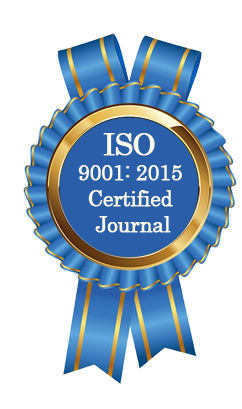| All | Since 2020 | |
| Citation | 105 | 60 |
| h-index | 4 | 4 |
| i10-index | 3 | 2 |
WJAHR Citation 
Login
News & Updation
Best Article Awards
World Journal of Advance Healthcare Research (WJAHR) is giving Best Article Award in every Issue for Best Article and Issue Certificate of Appreciation to the Authors to promote research activity of scholar.
Best Article of current issue
Download Article : Click here
Indexing
Abstract
MRI PATTERNS OF INTRACRANIAL MENINGIOMAS CORRELATING WITH HISTOLOGICAL FINDINGS
*Khalid Salih Maulood, Ali Husssein Al-Dharob and Muayad Hasan Srayyih
ABSTRACT
Background: Brain tumors are explored by radiology, which involves an MRI brain with and without contrast to reveal the nature, location, and size of the lesion. MRI is the preferred procedure for the initial evaluation of patients suspected of having intracranial lesions because of its wide availability, enhanced contrast activity, multiplanar capability without ionizing radiation, in any desired plane of section without requiring the patient to change position, and without bony artifact. Objectives: Is to evaluate the role of MRI in defining the characteristic patterns of intracranial meningiomas. And to correlate MRI with the histopathological findings in an attempt to predict the histological diagnosis prior to surgery. Methods: In this cross-sectional study fifty patients (17 males and 33 females) with an age ranging from 20-69 years which were studied at Ghazi Al Hariri Surgical Hospital on a period between October 2022 and September 2023. The questionnaire form was composed from two sections, section one for demographic information of the study participants. While section two for MRI findings. The study was performed on magnetic resonance imaging (MRI) of surgical and biopsy varied intracranial meningiomas in (50) patients (17 males) and (34 females) in an attempt to predict the MRI patterns of each histological types of meningioma. Pre-and post-contrast, sagittal and axial T1- weighted images with Gd-DTPA and a sagittal T2 weighted fast spin echo was done, the MRI were evaluated in regard to location, laterality of the tumor, signal intensity, contrast homogeneity, presence of meningiomas cleft sign, cystic changes, vascularity, mass effect and any other pathological observations (calcification , edema , bony or dural venous sinus invasion sign). Results: The study found that the most prevalent age groups were 40-49 and 50-59 years. histopathological examination confirmed the diagnosis of benign tumors among 44 (88%) patients, atypical tumors in in 4 (8%) patients, and malignant meningiomas in 2 (4%) patients only. In regards to the tumor location, cerebral convexity location was found in 17 (34%) patients, parasagittal in 11(22%) patients, Sphenoid ridge was seen in 6(12%) patients, olfactory groove 4 (8%) patients, suprasellar and cerebellar convexity each one of them having 3 (6%) patients, cerebellopontine angle (C.P.A) and intraventricular location in 2 (4%) patients for each, while the tentorium and cavernous sinus area locations shared 1 (2%) patient for each. Tumor sizes ranged roughly from (1.2 × 1.5 ×1 cm to 4.5 × 7.5 × 9.7 cm) in the anteroposterior, transverse and vertical dimensions. The sites of tumor encountered in both sides of brain, 27 (54%) patients having tumor in the right side, 16 (32%) patients having tumor in the left side and 7 (14%) patients having tumor at the central site. The two cases of intraventricular meningiomas were on in each lateral ventricle (4%). that most meningiomas showed isointense signal intensity on both T1 and T2 weighted images, in other word; 44 (88%) patients in T1 and 38 (76%) patients in T2 respectively. Moreover; most of the patients 41 (82%) had homogenous texture. 38 (76%) patients of tumors had positive meningioma cleft on MRI, while 16 (32%) patients had calcifications, just 5 (10%) patients had cystic changes and only 18 (36%) patients had avascular cellularity in MRI. eleven (22%) patients of meningiomas were not surrounded by edema, while, 25 (50%) patients had mild (+) degree, 8 (16%) patients had moderate (++) degree & 6 (12%) patients had marked (+++) degree of edema. Lastly; 41 (82%) patients had homogenous enhancement with contrast media while the heterogenous enhancement was occurred in 9 (18%) patients. Moreover; only 32 (64%) patients had dural tail enhancement. Conclusion: Overall, MRI is an effective non-invasive method for preoperative assessment of intracranial meningiomas, and it may accurately predict the aggressive behavior of more unusual and malignant meningiomas. This study found a lower rate of atypical and malignant meningiomas than other similar studies. Other findings are comparable to those reported in earlier studies on intracranial meningiomas.
[Full Text Article] [Download Certificate]
